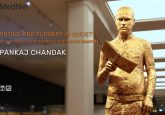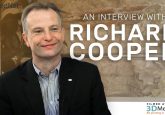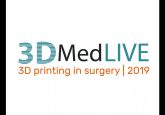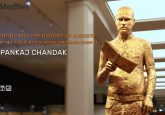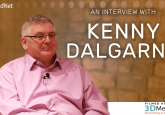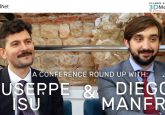3D-printed approaches to challenges in pediatric surgery
In this interview with David Dunaway, Professor of Craniofacial Surgery (Institute of Child Health, Great Ormond Street Hospital and University College London, UK), we explore how 3D printing and other technologies are used in pediatric surgery at Great Ormond Street, exceptional uses of these technologies in complex cases and the benefits of embedding 3D printing facilities at the point of care for pediatric medicine.
Register as a member of 3DMedNet for exclusive 3DMedLIVE content
Biography
 David Dunaway graduated from the University of Manchester (UK) in 1989 and became a Fellow of the Royal College of Surgeons in 1992. He undertook his Higher Surgical Training in Plastic Surgery in Leeds, Newcastle, London (all UK) and at the Australian Craniofacial Unit in Adelaide. He is also a qualified Dentist and is a Fellow Dental Surgeon of the Royal College of Surgeons. In 1997 he was appointed Consultant Plastic Surgeon at Canniesburn Hospital in Scotland (UK) specialising in Facial Deformity and Head and Neck surgery. In July of 2000 he joined the Plastic Surgery and Craniofacial Unit at Great Ormond Street Hospital for Children (London, UK) where he now leads the Craniofacial Service. He is a member of the Adult Craniofacial Service based at University College London Hospital and the Eastman Dental Hospital (both London, UK).
David Dunaway graduated from the University of Manchester (UK) in 1989 and became a Fellow of the Royal College of Surgeons in 1992. He undertook his Higher Surgical Training in Plastic Surgery in Leeds, Newcastle, London (all UK) and at the Australian Craniofacial Unit in Adelaide. He is also a qualified Dentist and is a Fellow Dental Surgeon of the Royal College of Surgeons. In 1997 he was appointed Consultant Plastic Surgeon at Canniesburn Hospital in Scotland (UK) specialising in Facial Deformity and Head and Neck surgery. In July of 2000 he joined the Plastic Surgery and Craniofacial Unit at Great Ormond Street Hospital for Children (London, UK) where he now leads the Craniofacial Service. He is a member of the Adult Craniofacial Service based at University College London Hospital and the Eastman Dental Hospital (both London, UK).
Dunaway is recognised as a world leader in craniofacial distraction and the treatment of craniosynostosis and frequently lectures internationally on these subjects. He has been involved with the separation of three sets of craniopagus twins and led the team that successfully separated the Sudanese twins at Great Ormond Street in 2012.
Dunaway is Professor of craniofacial surgery at the UCL Institute of Child Health (London, UK) where his research interests include the study of congenital facial deformity, craniosynostosis, craniofacial morphometrics and craniofacial distraction devices. In 2014 he was awarded a Hunterian Professorship by the Royal College of Surgeons for his surgical research. He holds several visiting professorships internationally. He is a Past-President of the plastic surgery section of the Royal Society of Medicine, Secretary General of the European Society of Craniofacial Surgeons and an honorary life member of the Australian Society of Plastic Surgeons.
Dunaway is actively involved in working and teaching in Africa and is a Trustee of Facing Africa, a British charity treating children from developing world countries with Craniofacial Deformity. In 2016 David received a CBE in the Queen’s Birthday Honours list for services to facial surgery. He is named in the Times Top 50 Surgeons list, Times Top Children’s Doctors list and by Tatler as a leading cosmetic surgeon for facelifts.
“By 3D printing things, it simplifies the data. It gives you something that you can pick up and hold, and it gives that data a very human aspect. When it comes down to it, surgeons, to an extent, are craftsmen. To be able to pick things up and practice what you are going to do, I think, is really important for us to be able to deliver good care to our patients.”
Dunaway was interviewed at 3DMedLIVE 2019: 3D printing in surgery. To access more exclusive interviews and content from 3DMedLIVE 2019, watch this space on 3DMedNet >>
>> Find out more about 3DMedLIVE
Interview segments:
- Introduction [00:03]
- 3D technologies at Great Ormond Street Hospital [00:32]
- 3D printing for complex cases [02:12]
- Embedding 3D printing at the point of care [03:32]
- The future of 3D printing technologies for surgery [04:07]
You may also be interested in:
- 3D-printed solutions for complex pediatric challenges with Juling Ong
- The future of surgery: 3D printing, genomics and personalized care with Richard Kerr
- Approaching reconstructive surgery with 3D technologies with Adrian Sugar
- Clinical engineering and innovative technologies for surgery with Giuseppe Isu
The opinions expressed in this feature are those of the interviewee and do not necessarily reflect the views of 3DMedNet or Future Science Group.
